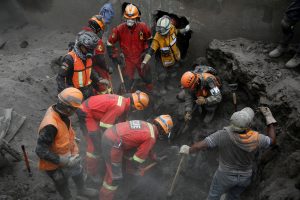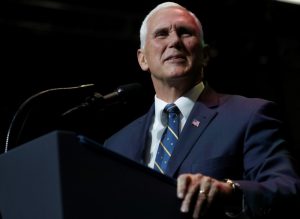
By Lucia Mutikani
WASHINGTON (Reuters) – U.S. job growth slowed more than expected in July as employment in the transportation and utilities sectors fell, but a drop in the unemployment rate suggested that the labor market was tightening.
Nonfarm payrolls increased by 157,000 jobs last month, the Labor Department said on Friday. The economy created 59,000 more jobs in May and June than previously reported and needs to generate about 120,000 jobs per month to keep up with growth in the working-age population.
The unemployment rate fell one-tenth of a percentage point to 3.9 percent in July, even as more people entered the labor force in a sign of confidence in their job prospects. The low unemployment rate could allow the Federal Reserve to raise interest rates again in September.
The jobless rate had risen in June from an 18-year low of 3.8 percent in May. Economists polled by Reuters had forecast nonfarm payrolls increasing by 190,000 jobs last month and the unemployment rate falling to 3.9 percent.
The slowdown in hiring last month likely is not the result of trade tensions, which have escalated in recent days, but rather because of a shortage of workers. There are about 6.6 million unfilled jobs in the nation. A survey of small businesses published on Thursday showed a record number in July of establishments reporting that they could not find workers.
According to the NFIB, the vacancies were concentrated in construction, manufacturing and wholesale trade industries. Small businesses said they were also struggling to fill positions that did not require skilled labor.
The Fed’s Beige Book report last month showed a scarcity of labor across a wide range of occupations, including highly skilled engineers, specialized construction and manufacturing workers, information technology professionals and truck drivers.
The shortage of workers is steadily pushing up wages.
Average hourly earnings increased seven cents, or 0.3 percent, in July after gaining 0.1 percent in June. The annual increase in wages was unchanged at 2.7 percent in July.
U.S. stock market futures dipped after the data while the dollar <.DXY> fell against a basket of currencies. Prices of U.S. Treasuries were slightly higher.
TRADE TENSIONS
President Donald Trump’s administration has imposed duties on steel and aluminum imports, provoking retaliation by the United States’ trade partners, including China, Canada, Mexico and the European Union. It has also slapped 25 percent tariffs on $34 billion worth of Chinese imports.
Beijing has fought back by slapping tariffs on U.S. exports to China. On Friday, China’s Commerce Ministry said a new set of proposed import tariffs on $60 billion worth of U.S. goods are rational and restrained and warned that it reserves the right of further countermeasures in the intensifying trade war.
On Wednesday, Trump proposed a higher 25 percent tariff on $200 billion worth of Chinese imports.
Economists have warned that the tit-for-tat import duties, which have unsettled financial markets, could undercut manufacturing through disruptions to the supply chain and put a brake on the strong economic growth.
There have also been concerns that the trade tensions could dampen business confidence and lead companies to shelve spending and hiring plans. But a $1.5 trillion fiscal stimulus, which helped to power the economy to a 4.1 percent annualized growth pace in the second quarter, is assisting the United States in navigating the stormy trade waters.
The Fed left interest rates unchanged on Wednesday while painting an upbeat portrait of both the labor market and economy. The U.S. central bank said “the labor market has continued to strengthen and economic activity has been rising at a strong rate.” It increased borrowing costs in June for the second time this year.
The moderation in employment gains and steady wage growth could ease concerns about the economy overheating, and keep the Fed on a gradual path of monetary policy tightening.
The Fed’s preferred inflation measure, the personal consumption expenditures (PCE) price index excluding the volatile food and energy components, increased 1.9 percent in June. The core PCE hit the central bank’s 2 percent inflation target in March for the first time since December 2011.
Manufacturing payrolls rose by 37,000 jobs last month after increasing by 33,000 in June. Construction companies hired 19,000 more workers after increasing payrolls by 13,000 jobs in June. Retail payrolls rebounded by 7,100 jobs last month after losing 20,200 in June.
Education and health services added 22,000 jobs last month, the fewest since October 2017, after boosting payrolls by 69,000 jobs in June. July’s slowdown in hiring reflected a loss of 10,800 education services jobs.
Transportation payrolls dropped by 1,300 jobs last month, with transit and ground transportation employment declining by 14,800 jobs. Utilities employment fell for a third straight month and the finance and insurance industry shed 9,400 jobs last month.
Government employment fell by 13,000 jobs in July.
(Reporting by Lucia Mutikani; Editing by Jonathan Oatis and Paul Simao)










